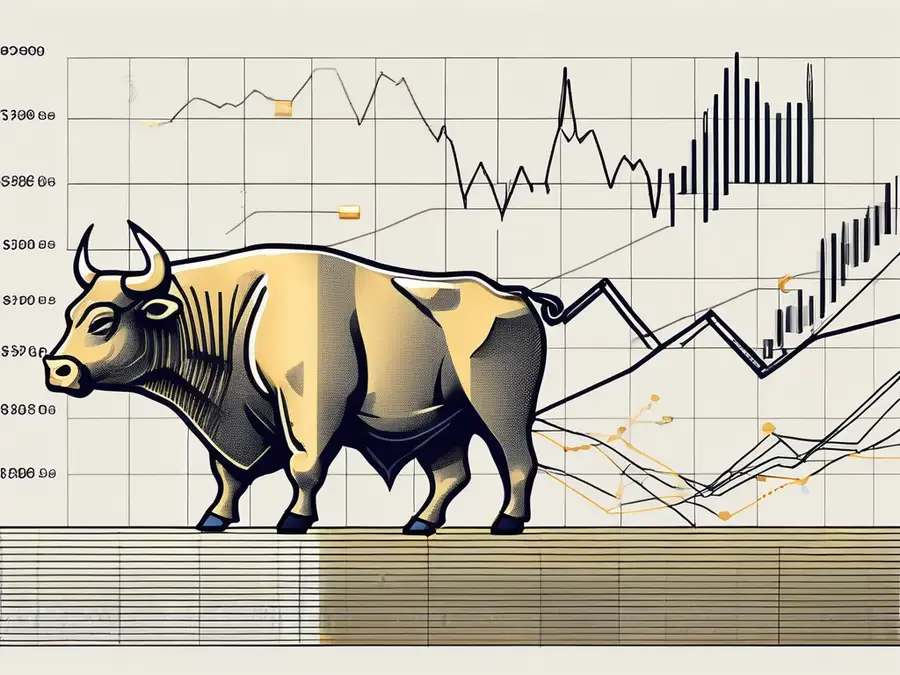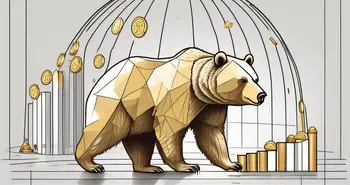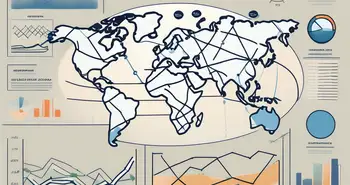What Market Factors Mean for Economic Trends

As an expert in the field, I am excited to delve into the fascinating world of market factors and their profound impact on economic trends. Understanding how these factors shape our economies is essential for businesses, investors, and policymakers alike. Join me on this enlightening journey as we explore the definition of market factors, uncover key influencers, and ponder the interplay between these factors and economic trends.
Understanding Market Factors
Let's start by clarifying what we mean by market factors. In simple terms, market factors are the external forces that affect supply and demand, and subsequently, the prices of goods and services in a given market. These factors are not isolated; they operate in a complex ecosystem that constantly evolves and interacts with the broader economic landscape.
Definition of Market Factors
Market factors can include a variety of elements such as consumer behavior, government policies, technological advancements, natural disasters, and global trade patterns. Each factor carries its weight, exerting its influence on the market and shaping economic trends in unique ways.
Key Market Factors Influencing Economies
Now that we have a basic understanding of market factors, let's explore some key influencers that have a significant impact on economies.
- Supply and Demand: The backbone of market dynamics lies in the interplay between supply and demand. When demand exceeds supply, prices rise, and vice versa. Understanding the balance between these two forces is critical for businesses to thrive in a competitive market.
- Inflation and Interest Rates: Inflation, the increase in prices over time, and interest rates, the cost of borrowing money, are two interconnected market factors. High inflation erodes purchasing power, while high interest rates hinder investment and economic growth. Policymakers closely monitor these factors and make strategic decisions to maintain stability.
However, market factors go beyond just supply, demand, inflation, and interest rates. Let's delve into a few more factors that play a crucial role in shaping economies.
Consumer Behavior: The Driving Force
Consumer behavior is a key market factor that influences the success or failure of businesses. Understanding consumer preferences, needs, and purchasing patterns is vital for companies to develop products and services that cater to their target audience. Factors such as changing demographics, cultural shifts, and technological advancements greatly impact consumer behavior, making it a dynamic and ever-evolving aspect of market forces.
Government Policies: Shaping the Playing Field
Government policies play a significant role in shaping market dynamics. Regulations, tax policies, trade agreements, and fiscal measures all contribute to the overall business environment. These policies can either stimulate or hinder economic growth, depending on their design and implementation. Businesses closely monitor government policies to anticipate changes and adapt their strategies accordingly.
By understanding and analyzing these additional market factors, businesses and policymakers can gain a more comprehensive view of the economic landscape. This knowledge allows for informed decision-making and the ability to navigate the complexities of the market with greater precision.
The Interplay Between Market Factors and Economic Trends
Market factors do not operate in isolation; they intricately intertwine with economic trends, shaping the direction in which our economies move.
Understanding the complex relationship between market factors and economic trends requires a multifaceted approach that considers various interconnected variables. Factors such as consumer behavior, technological advancements, government policies, and global events all contribute to the intricate web that influences market dynamics and economic outcomes.
The Role of Supply and Demand
Supply and demand dynamics play a pivotal role in economic trends. When demand rises, businesses increase production, stimulate employment, and fuel economic growth. Conversely, when demand drops, businesses reduce production, leading to potential job losses and economic contraction. Understanding the delicate equilibrium between supply and demand is vital for forecasting economic trends.
Moreover, the global supply chain intricately connects producers and consumers across borders, influencing market factors and economic trends on a worldwide scale. Disruptions in the supply chain, whether due to natural disasters, trade disputes, or geopolitical tensions, can have far-reaching effects on prices, availability of goods, and overall economic stability.
The Effect of Inflation and Interest Rates
Inflation and interest rates can significantly impact economic trends. High inflation erodes consumer purchasing power, reducing spending and potentially slowing economic growth. On the other hand, lower interest rates incentivize borrowing and investment, stimulating economic activity. Monitoring and managing these factors is crucial for maintaining a healthy and stable economy.
Furthermore, the interplay between inflation, interest rates, and currency values creates a complex environment that influences trade balances, investment flows, and overall economic performance. Central banks and policymakers closely monitor these interrelated factors to make informed decisions that support sustainable economic growth and stability.
Global Market Factors and Their Economic Impact
In today's interconnected world, global market factors play an increasingly influential role in shaping economic trends.
Impact of Global Trade Policies
Trade policies enacted by countries or regional blocs can have far-reaching consequences on economic trends. Trade agreements that promote openness and facilitate the flow of goods and services tend to stimulate economic growth. Conversely, protectionist measures can restrict trade, limit market access, and hinder economic expansion. The balance between protectionism and free trade is a delicate dance that directly impacts economic trends.
Influence of International Financial Markets
The interconnectedness of financial markets across the globe means that even distant economic events can have a ripple effect on other economies. Economic shocks, such as a financial crisis in one country, can quickly spread to other nations, impacting economic trends on a global scale. Understanding these linkages and anticipating the potential domino effects is crucial for navigating the complex world of international finance.
Technological Advancements and Market Factors
The rapid pace of technological advancements is revolutionizing industries and disrupting traditional market structures.
The Digital Economy and Market Trends
The rise of the digital economy has reshaped market factors and economic trends. E-commerce, artificial intelligence, and automation are transforming the way we do business and altering consumer behavior. Adapting to these technological shifts is essential for businesses to stay competitive and thrive in a digital landscape.
Technological Disruption in Traditional Markets
New technologies often disrupt existing markets, sometimes rendering entire industries obsolete. Market factors such as consumer preferences, innovation, and access to new technologies heavily influence the speed and magnitude of these disruptions. Businesses that embrace technological advancements and adapt to changing market dynamics are well-positioned to weather these transitions and seize new growth opportunities.
Future Predictions: Market Factors Shaping Economic Trends
Anticipating future economic trends requires a careful analysis of current market factors and their potential trajectories.
Predicting Market Trends Based on Current Factors
Expertise in market analysis allows us to make informed predictions about future economic trends. By closely monitoring key market factors and their interplay, we can identify patterns and potential outcomes. However, it is important to remember that no prediction is foolproof, as market factors are subject to volatility and unexpected events. Staying adaptable and vigilant is key to successfully navigating the ever-evolving economic landscape.
The Role of Emerging Markets in Future Economic Trends
Emerging markets, with their vast potential and rapid growth, are instrumental in shaping future economic trends. Market factors unique to these regions, such as demographic shifts, urbanization, and technological leapfrogging, will have a significant impact on global economic dynamics. Recognizing the opportunities and challenges presented by these emerging markets is crucial for businesses and investors seeking sustainable growth.
FAQ: Frequently Asked Questions
What are market factors?
Market factors are external forces that influence supply and demand, thereby affecting prices in a given market. These factors can include consumer behavior, government policies, technology, and global trade patterns.
How do market factors impact economic trends?
Market factors shape economic trends by influencing supply and demand dynamics, inflation rates, interest rates, and trade policies. They can also disrupt traditional markets through technological advancements and impact economies on a global scale.
What role do emerging markets play in future economic trends?
Emerging markets have tremendous potential to drive future economic trends. Factors such as demographic shifts, urbanization, and technological advancements in these regions will significantly impact global economic dynamics and present new opportunities for growth.
Why is understanding market factors important for businesses?
Understanding market factors is crucial for businesses to stay competitive. By analyzing these factors, businesses can anticipate changes, adapt to market trends, and identify growth opportunities. It allows them to make informed decisions that align with the evolving economic landscape.
Can market trends be accurately predicted?
While experts can make predictions about market trends based on current market factors, no prediction is infallible. The volatility of market factors and the potential for unforeseen events make it challenging to accurately predict future trends. However, rigorous analysis and staying attuned to market dynamics can lead to more informed decision-making.
As an expert in this field, I have witnessed firsthand the transformative power of market factors on economic trends. The world of supply and demand, inflation and interest rates, global trade policies, and technological advancements is a captivating melting pot of influences. My advice to readers is to stay curious, stay informed, and embrace change. By understanding the intricate dance between market factors and economic trends, you can position yourself for success and make informed decisions in an ever-changing world.
As you navigate the complexities of market factors and their impact on economic trends, take the next step with Morpher. Embrace the future of trading with a platform that offers zero fees, infinite liquidity, and the flexibility of fractional investing and short selling. With Morpher's revolutionary blockchain technology, you gain safety, control, and up to 10x leverage to maximize your trading potential. Experience a unique trading environment with Virtual Futures and a non-custodial Morpher Wallet. Ready to transform your investing journey? Sign Up and Get Your Free Sign Up Bonus today, and join the global community that's democratizing trading with Morpher. What Market Factors Mean for Economic Trends

Disclaimer: All investments involve risk, and the past performance of a security, industry, sector, market, financial product, trading strategy, or individual’s trading does not guarantee future results or returns. Investors are fully responsible for any investment decisions they make. Such decisions should be based solely on an evaluation of their financial circumstances, investment objectives, risk tolerance, and liquidity needs. This post does not constitute investment advice.

Painless trading for everyone
Hundreds of markets all in one place - Apple, Bitcoin, Gold, Watches, NFTs, Sneakers and so much more.

Painless trading for everyone
Hundreds of markets all in one place - Apple, Bitcoin, Gold, Watches, NFTs, Sneakers and so much more.









